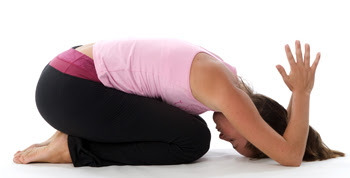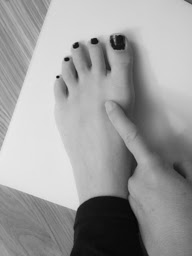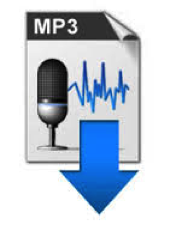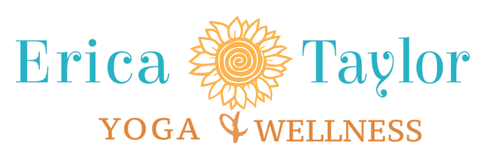As I sit here somewhat foggy-brained with a big cup of coffee next to me, I am dedicating this post to the issue of sleep. Whether you are still expecting the arrival of your sweet bundle or you have a baby at home, lack of sleep can leave us all feeling depleted and dragging through the day.
This issue has been popping up frequently in weekly prenatal yoga check-ins, and so many new moms struggle with sleep deprivation too. Especially when we want to be at our best to help nurture our wee ones (whether they are still on the inside or not), we need to find ways to recharge ourselves and improve the quality of our own slumber. Basically, we can’t give what we don’t have. Nurture yourself and your babe is nurtured in turn.
In this post you will find yoga poses, acupressure points, and a free guided relaxation to download that will help you relax, fall asleep, and get back to sleep should you wake up often. Kyla Brown, a Certified Nutrition Consultant and a fellow mama, also offers nutrition tips for how to maximize your chances of a great night’s sleep.
I hope this helps you smile, and sleep like a baby. Wait, just kidding, babies aren’t always the best sleepers… 😛
Love and light,
Erica

Yoga For Better Sleep
Forward bends are your friend here! Think about poses that help you turn inward and rest. In addition to seated forward bends, many of the poses we do on all fours in prenatal yoga fit the bill and are safe for most postpartum women too. Breathe deeply in each pose, maybe exhaling a sigh out of the mouth for the first few breaths.
Here are some ideas:
Child’s Pose or Polar Bear Pose – From all fours, take the knees wide and sink back with your hips to your heels. Rest your forehead on the ground. If child’s pose feels uncomfortable, come into Polar Bear Pose instead by keeping the hips elevated, placing the forearms on the ground, and hanging your head heavy.
Forearm Hip Circles – On all fours, take your knees wide with your big toes touching. Drop down onto your forearms and make big circles with your hips. Circle in both directions, breathing deeply. You can also make figure eights with your hips to change things up.
Butterfly Pose – Sit on a pillow or folded blanket. Bring the soles of your feet together a comfortable distance from your body, opening the knees out to the sides. Press your hands into the floor on either side of your hips and take a deep inhale, and as you exhale walk the hands forward, bowing the heart gently. If possible, find something to rest your head on so you can let go, maybe a bolster, a couch or a chair. When you are done, use your hands to the outside of your thighs to help guide the knees back together.
Deep Breathing with Point Holding – Breathing deeply triggers the relaxation response in our nervous system. Find a position where you feel really supported and relaxed. Place the fingers of one hand on the center of your breastbone. This spot is an acupressure point called “Sea of Tranquility”, known to help relieve stress and promote relaxation. Place the fingers of your other hand on the space between your eyebrows. This spot is your Third Eye point, known in both yoga and acupressure to calm the mind and stimulate restful sleep. Breathe deeply and easily, letting both your exhale and your inhale be long. Try to soften all the muscles of your face and let go of all thoughts and worries. Hold the points for about a minute or two, then relax the arms by your sides.
|
|

Acupressure for Deep Rest
Acupressure is a wonderful way to help correct imbalances and release blockages along the energetic lines of the body, promoting better health and wellness. It has been proven to help with many prenatal and postpartum issues, including insomnia and sleep disturbances.
You don’t have to use all of these points, just pick one that calls to you. Give firm but relaxed pressure with your middle or pointer finger for about one minute, breathing deeply. If you aren’t sure if you have the spot, don’t sweat it, just hold a couple fingers in the area. You only need to pick one side of the body to work on.
On the Wrist – This point is particularly useful if your sleep issues are accompanied by anxiety or stomach problems (heartburn, nausea, etc). 
- Inner Gate: Find the middle of your inner wrist crease. Go three finger widths (pointer to ring finger) up on the inner forearm in between the two tendons you feel running up the middle.
On the Back of the Head – There are two points on the back of the head you can hold together with your whole hand while lying down. These points are particularly useful for sleep issues related to overactive mind, back pain, restlessness and headaches.
 Heavenly Pillar: on the back of the neck, one-half inch below the base of the skull. Trace out from the midline to a little less than the width of your pointer and middle fingers together. There are ropy muscles there. Heavenly Pillar: on the back of the neck, one-half inch below the base of the skull. Trace out from the midline to a little less than the width of your pointer and middle fingers together. There are ropy muscles there.- Gates of Consciousness: Below the base of the skull, in the hollow between the two large vertical neck muscles, two to three inches apart depending on the size of your head.
On the Foot – If you are that person who wakes up at 3am every night and can’t go back to sleep, you wake up repeatedly, and/or you are irritable, this point could work well for you. You can have your sweetie hold it for you if you can’t reach your foot easily (you don’t need to wait until the middle of the night to hold it, try before bed). 
- Bigger Rushing: Place your middle finger on the top of the foot at the base between your big toe and second toe. Trace down an inch or slightly more towards your ankle. You should feel a little divot just before where the bones meet. It may feel tender.
|
|
|
Nutrition For Sweeter Zzzzzz’s
 Kyla Brown, a Certified Nutrition Consultant and fellow mama that specializes in prenatal and postnatal wellness, gives us her wise advice here:
The best way to ensure good sleep on a regular basis is to eat a whole foods-based diet, rich in high-quality protein and fat sources, and a variety of colorful fruits and vegetables. Specific nutrients that can help mitigate problems with insomnia are the amino acid tryptophan and the mineral magnesium. Tryptophan is converted into melatonin and serotonin, which are natural sleep-inducing compounds.
Foods that have a particularly high tryptophan content include:
- Turkey
- Milk
- Cottage cheese
- Chicken
- Eggs
- Almonds
Remember to look for pasture-raised products when buying dairy or meat.
Magnesium is known as “the relaxer,” since, among many other important functions, it helps our muscles relax. Magnesium deficiency is common, and is often connected to insomnia.
Foods that contain magnesium in abundance include:
- Leafy greens
- Whole grains
- Kelp
- Nuts
- Tofu
As with your dairy and meat products, always look for organic sources when buying grains, nuts and produce.
Lastly, eating good-quality fats at dinner can help induce sleep. Opt for avocados, eggs, nuts and fish, and cook with olive oil, coconut oil, grass-fed butter.
|
|

Guided RelaxationGuided relaxations can help us drop into deep restorative rest. Even if we remain awake while listening to them, they can take us into sleep-like brainwave states and allow us to receive the benefits.I have trained in a particular method of guided relaxation (called Yoga Nidra), and on a personal level, yoga nidra saved me from many sleepless nights in my own pregnancy!!
I recorded a Yoga Nidra session especially for my students. You can use this anytime you need to fall asleep, or just to restore yourself during a break in the day.
Download the audio file here.

I truly hope this makes a difference in your day!
Namaste.
|
|




 Heavenly Pillar: on the back of the neck, one-half inch below the base of the skull. Trace out from the midline to a little less than the width of your pointer and middle fingers together. There are ropy muscles there.
Heavenly Pillar: on the back of the neck, one-half inch below the base of the skull. Trace out from the midline to a little less than the width of your pointer and middle fingers together. There are ropy muscles there.
 Kyla Brown, a Certified Nutrition Consultant and fellow mama that specializes in prenatal and postnatal wellness, gives us her wise advice here:
Kyla Brown, a Certified Nutrition Consultant and fellow mama that specializes in prenatal and postnatal wellness, gives us her wise advice here:
